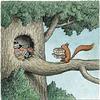Take a photo of a barcode or cover
adventurous
dark
emotional
mysterious
sad
slow-paced
Plot or Character Driven:
Character
Strong character development:
No
Loveable characters:
Complicated
Diverse cast of characters:
No
Flaws of characters a main focus:
Yes
"This is not simply an event in time, because it lasts, it continues to last and will never, never be over. And that is what she sees. That is what she recognizes. Every event creates itself over and over again in almost the same proportions, with almost the same impact, in almost the same way. The only difference is that the event comes from outside for the first time, works its way into the mind, and then remains, is retold, is imitated, is worked up into a story. Except with her. Her story is broken."
When you grow familiar enough with the work and life of a given writer, it often feels that their life's work could really be boiled down to a few distinct moments, a few memorable characters, and a few important settings. From then on, you can't read anything of theirs without catching glimpses of their childhood sweetheart in every love interest, their father in every hero, and their fears in the nightmares and traumas of every protagonist.
With these obsessive repetitions in mind, what would it look like if the author were to write their own story as if it were a work of fiction? Would it match up to their true lived experience? Does life truly boil down to the moments, people, and places we obsess over? Does not their exaggerated recurrence in our minds qualify as our own lived work of fiction? What, then, would be considered the non-fiction account?
In short, it's a trip.
When you grow familiar enough with the work and life of a given writer, it often feels that their life's work could really be boiled down to a few distinct moments, a few memorable characters, and a few important settings. From then on, you can't read anything of theirs without catching glimpses of their childhood sweetheart in every love interest, their father in every hero, and their fears in the nightmares and traumas of every protagonist.
With these obsessive repetitions in mind, what would it look like if the author were to write their own story as if it were a work of fiction? Would it match up to their true lived experience? Does life truly boil down to the moments, people, and places we obsess over? Does not their exaggerated recurrence in our minds qualify as our own lived work of fiction? What, then, would be considered the non-fiction account?
In short, it's a trip.
Thank you to partner Bibliolifestyle and Harper Via for the gifted copy
Switzerland, 1816. 18-year-old Mary Shelley and her lover arrive in Geneva to visit their friends. Reeling from an unimaginable loss, Mary spends her days in sorrow until a challenge to write the best ghost story reminds Mary of another summer four years ago...
Scotland, 1812. Mary arrives as a guest of the Baxter family and befriends young Isabella. The girls soon form a close bond until a charismatic yet mysterious man enters the picture.
FRANKENSTEIN is a sapphic reimagining of Mary Shelley's life and the roots of her literary masterpiece. The novel navigates two distinct timelines, weaving the past from Mary's 1st person POV and the present from a 3rd person view. The narrative dance between these timelines left me grappling with the elusive connections that sometimes remained out of reach.
I appreciate the Sapphic undertones and the dream-like quality, adding an intriguing layer to Mary's character. While her voice veers on the distant and passive, it adds to the sinister and atmospheric world Eekhhout constructed in FRANKENSTEIN.
I wasn't aware of Mary Shelley's bisexuality/queerness until this book and had a field trip going down the Google rabbit hole. FRANKENSTEIN excels in creating a hauntingly atmospheric setting, making it a perfect read for the Halloween season.
Switzerland, 1816. 18-year-old Mary Shelley and her lover arrive in Geneva to visit their friends. Reeling from an unimaginable loss, Mary spends her days in sorrow until a challenge to write the best ghost story reminds Mary of another summer four years ago...
Scotland, 1812. Mary arrives as a guest of the Baxter family and befriends young Isabella. The girls soon form a close bond until a charismatic yet mysterious man enters the picture.
FRANKENSTEIN is a sapphic reimagining of Mary Shelley's life and the roots of her literary masterpiece. The novel navigates two distinct timelines, weaving the past from Mary's 1st person POV and the present from a 3rd person view. The narrative dance between these timelines left me grappling with the elusive connections that sometimes remained out of reach.
I appreciate the Sapphic undertones and the dream-like quality, adding an intriguing layer to Mary's character. While her voice veers on the distant and passive, it adds to the sinister and atmospheric world Eekhhout constructed in FRANKENSTEIN.
I wasn't aware of Mary Shelley's bisexuality/queerness until this book and had a field trip going down the Google rabbit hole. FRANKENSTEIN excels in creating a hauntingly atmospheric setting, making it a perfect read for the Halloween season.
Niet dat er echt wat mis is met het boek, het is goed geschreven, maar gewoon niet mijn ding. Een beetje te vreemd wat mij betreft..
Although we can assume that Mary is writing Frankenstein during the 1816 timeline, this is really just a story about Mary's early relationship problems.
this was a beautiful book with such a presence, but it felt a lot more character-based than anything and it was very easy to get confused.
Buon romanzo, pessima biografia.
La storia è suddivisa su due piani temporali:
- quella del 1812 abbastanza in linea con quella che poteva essere una Mary quindicenne. Con una bella romanzata dalle tinte oscure che ha ben enfatizzato quello che poteva essere il mondo immaginario della Shelley
- quella del 1816 distantissima dalla psicologia della scrittrice di Frankestein. La Shelley libertina e femminista viene mostrata perennemente in crisi amorosa e incerta delle sue scelte. Non c'è niente oltre il suo struggimento per Percy e Clare, sembra più un giudizio morale della Eekhout che la biografia di Mary Shelley
Letto con il gruppo di lettura "Le moschettiere di Dumas"
La storia è suddivisa su due piani temporali:
- quella del 1812 abbastanza in linea con quella che poteva essere una Mary quindicenne. Con una bella romanzata dalle tinte oscure che ha ben enfatizzato quello che poteva essere il mondo immaginario della Shelley
- quella del 1816 distantissima dalla psicologia della scrittrice di Frankestein. La Shelley libertina e femminista viene mostrata perennemente in crisi amorosa e incerta delle sue scelte. Non c'è niente oltre il suo struggimento per Percy e Clare, sembra più un giudizio morale della Eekhout che la biografia di Mary Shelley
Letto con il gruppo di lettura "Le moschettiere di Dumas"
dark
mysterious
reflective
slow-paced
Plot or Character Driven:
Character
Strong character development:
No
Loveable characters:
No
Diverse cast of characters:
No
Flaws of characters a main focus:
No
my first favorite of the year! if you know me you know i am an absolute mary shelley devotee! frankenstein is one of my favorite books and this story is a fictionalized account of mary shelley writing the novel with a dual timeline of her as a young teenager. it’s also chock full of sapphic longing and gothicism. the prose is absolutely gorgeous. just a perfect novel all around!!!






